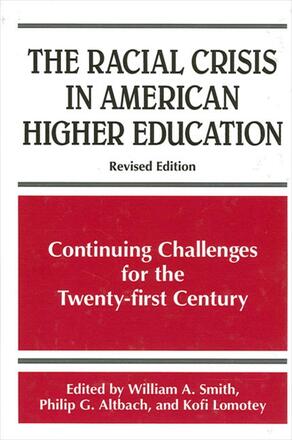
The Racial Crisis in American Higher Education
Continuing Challenges for the Twenty-first Century, Revised Edition
Alternative formats available from:
A revised edition of the classic text, illuminating the linkages between race and higher education.
Description
"Why is it that as we enter the twenty-first century, the nation's predominantly white colleges and universities continue to be settings where people of color feel unwelcome and marginalized? The contributors to this volume dissect a variety of structural and attitudinal factors that are prevalent in the higher education community, organizational constructs and value orientations which seem to hark more to the past than to the future. They comment on the political, social, and economic factors that have shaped academic culture, and buttressed its quietly efficient maintenance of racially discriminatory practices.
"The American system of higher education is often regarded as the best in the world. Smith, Altbach, and Lomotey have edited a volume that implicitly asks how much better still it could be if it embraced people of color and provided them with a supportive and nurturing environment, one which encouraged them to reach their fullest creative and intellectual potential. Indeed, this will probably be the most significant challenge that the academy faces in the twenty-first century." — William B. Harvey, Vice President and Director, Office of Minorities in Higher Education American Council on Education, Washington, D.C.
William A. Smith is Assistant Professor in the Department of Education, Culture, and Society and the Ethnic Studies Program at the University of Utah and is Co-Director of the Center for the Study of Race and Diversity in Higher Education. Philip G. Altbach is J. Donald Monan Chair in Education and Director of the Center for International Higher Education at Boston College. Kofi Lomotey is President of Fort Valley State University.
Reviews
"The editors have provided the best up-to-date analysis of the role that critical race theory plays in helping to understand how prejudice toward and discrimination against people of color continues in society and in our institutions of higher education. The Racial Crisis in American Higher Education, Revised Edition tells us, loud and clear, that colleges and universities in this country have the moral responsibility and authority to create inclusive communities of learning." — Yolanda T. Moses, President, American Association for Higher Education